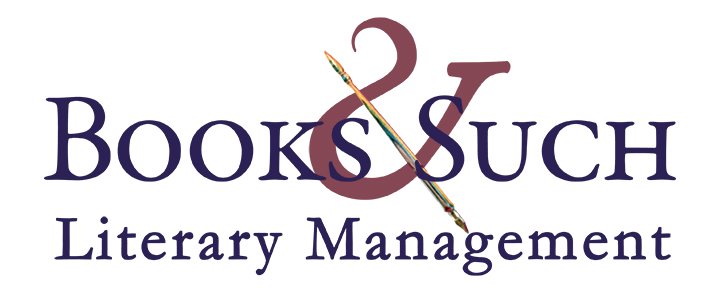By Wendy Lawton

This week began with a celebration at Bethany House in Minneapolis to mark Julie Klassen’s one millionth book sold. Congratulations, Julie!
A million books! It reminded me what so many writers are anxious to know: when it comes to book sales, how many books does it take to equal good?
The answer? It depends.
I’ve heard the strangest theories of what constitutes success. For instance, this from Publishers Weekly, July 17, 2006: “Here’s the reality of the book industry: in 2004, 950,000 titles out of the 1.2 million tracked by Nielsen Bookscan sold fewer than 99 copies. Another 200,000 sold fewer than 1,000 copies. Only 25,000 sold more than 5,000 copies. The average book in America sells about 500 copies.”
This statistic is totally meaningless. That would mean that if 501 copies of your book sold you could say you have better than average sales. I’m guessing that statistic encompasses the avalanche of self-published books, poetry chapbooks run off on mimeograph machines, photo memory books made to commemorate your trip to Tuscany, family genealogies and who knows what else.

I know writers wish we could simply give a definitive answer like: 1 to 4,999 books sold = poor. 5,000 to 9,999 books sold = fair. 10,000 to 19,999 books sold = good. 20,000 and up = success. Wouldn’t that make it easy? Every writer could then spin his standing with confidence, “I’m more than halfway to success.” Or “I sold 9,890 books. If my publisher had just pushed a little harder I could have risen above mediocrity, but. . .” Believe me, if we had a simple yardstick by which to gauge success it would just create new questions, new problems.
Here’s why it depends:
- The number is different for every publisher. A small publisher may be delighted with sales of 4,000 books the first year where a bigger publisher will be disappointed with sales of 20,000 books.
- The time frame needs to be defined when talking about book sales. When writers talk about book sales they are often sloppy about defining the time frame. When they brag about the number of books sold are they talking about a year’s sales or the life of the book? When editors and agents talk about books sold, we are generally talking about the first twelve months unless we specify otherwise.
- There’s a difference between “Books in Print” and “Books Sold.” There can be a huge difference in these two figures, especially with mass market books. When an agent talks about a client’s statistics, we always talk about the actual number of books sold.
- There are often mitigating circumstances. Some books— like reference books, textbooks, commemorative books and other special projects– may sell in very small numbers but they still meet the expectations of the publisher. I imagine when the first edition of Audubon’s Birds of America was published with 400+ double elephant folio plates, no one planned on a huge printing. And yet, what a success– a tour de force.

So how can I know if the sales of my book are healthy? Let me give you a quick-and-dirty rule of thumb. If you earn back your advance before the end of twelve months you’ve exceeded expectations.
When your publisher offers an advance it’s rarely a number pulled out of a hat. They don’t get together in a meeting and say, “Let’s give him $20,000.00 because this is such a good book.” The editor or the team prepares a pro forma profit and loss analysis on your book. He estimates how many copies they can reasonably sell in the first twelve months. He looks at the royalty rate and estimates what your royalty income would be for that twelve-month period. That becomes the advance-against-royalties that you will be offered. There are always exceptions to the rule. Sometimes a publisher pays more for a book than they can reasonably hope to recoup in the first year because of a bidding war or an auction. Or perhaps they pay more to woo an author away from another house. Or maybe the book is one that fills a hole in their line. But for the most part, this rule of thumb will work.

If you want to set a definitive goal for successful book sales, here’s how to do it: Figure out roughly how much royalty you make per book. For our example let’s say your book’s cover price is $15.00. If you are paid on the net (the normal way it is accounted in CBA*) the store will probably buy the book for $9.00 (60% of cover price). Let’s say your royalty rate is 18%. You’ll make $1.62 on each book. If you were paid on cover price (the norm in ABA**) you’d figure $15.00 x 9% royalty (the royalty rate is different because it reflects cover price instead of net) and you’d come up with a per book royalty amount of about $1.35 per book. (In the real world, not all books will sell for full price but for for the sake of simplicity, we won’t complicate this.) So the formula would be: [Advance paid] divided by [royalty amount per book] equals [number of books needed to be sold to earn out].
Once you have your sales goal set, it’s time to get to work helping your publisher sell the book. And when you reach one million books sold, you won’t need to worry about how many books constitute success.
*The Christian Booksellers Association, commonly called the Christian market **American Booksellers Association, commonly called the general market
Photos courtesy of Cynthia Ruchti.

 Publishing Trends and Counter-Trends
Publishing Trends and Counter-Trends
I really do not have a clue
of the sales of what I’ve written.
perhaps it’s odd, but also true,
for statistics are snake-bitten.
I write my heart, for what it’s worth,
casting faith unto the waves,
unknowing hope given birth
of the souls it saves.
Yeah, it might be nice to have
a huge following on Twitter,
but the equalizer is the lav,
and there’s humility in the s***ter.
I hope I’m just a dinkum bloke,
and that there’s truth in what I spoke.
Andrew, there is always full value in what you’ve written. You have a rare gift. Praying for a good day, precious brother.
This is very interesting but wondering if there is any updated data?
Thanks for this wonderful information! I have worked with several publishers; is there an online resource that can help me ascertain lifetime sales of my titles?
Thank you, Wendy. This helps put things into perspective.
Interesting. I have sold more of my children’s book “Licky the Lizard” at local vendor events, etc. than I have on Amazon.
Great information! I appreciate you sharing it!
As I get ready to publish my book, I just claim that it will go out and accomplish that which God wants it to accomplish…no idea what the number might be!
Thank you. This was quite helpful.
This information is helpful, Wendy, especially showing how to etimate the number of sales needed to earn back the advance and knowing that earning back in the first year is “exceeding expectations” for most publishers. That’s a good reason to shy away from extremely large advance unless you’re already a best-selling author.
It’s also good to remember that “success” might be more intangible, like how readers are impacted by our stories.
So cool that Julie got to celebrate this great milestone, though. It means she’s impacted untold numbers of readers!
Thank you, Wendy. This is good information for the long view.
Interesting! Since publishers and agents define success by what sells the first year, I’m curious what fraction of total sales for an “average” book that is a small to moderate success are made in that first year? What about the long-tail sales of a book? (Long-tail is a very significant part of indie sales, which actually fare better over all without the huge spike and precipitous drop of the hard-pressing launch days of traditional publishing.) What fraction of sales for a typical traditionally published novel occur after that 1-year after release? (1%, 10%, 30%, more than the total the 1st year? Estimated range is all I’m asking, not real numbers.) Thanks!
What helpful information. I always learn something when I visit.
Wow! A million books. Congratulations!!!
Congratulations, Julie and Books & Such!
? I’ve written books in the past w major publishers. How can I find out how many they’ve sold? Thank you.
Dharma Singh Khalsa MD
Brain longevity 1997. Warner Books
Meditation as Medicine 2001 Atria